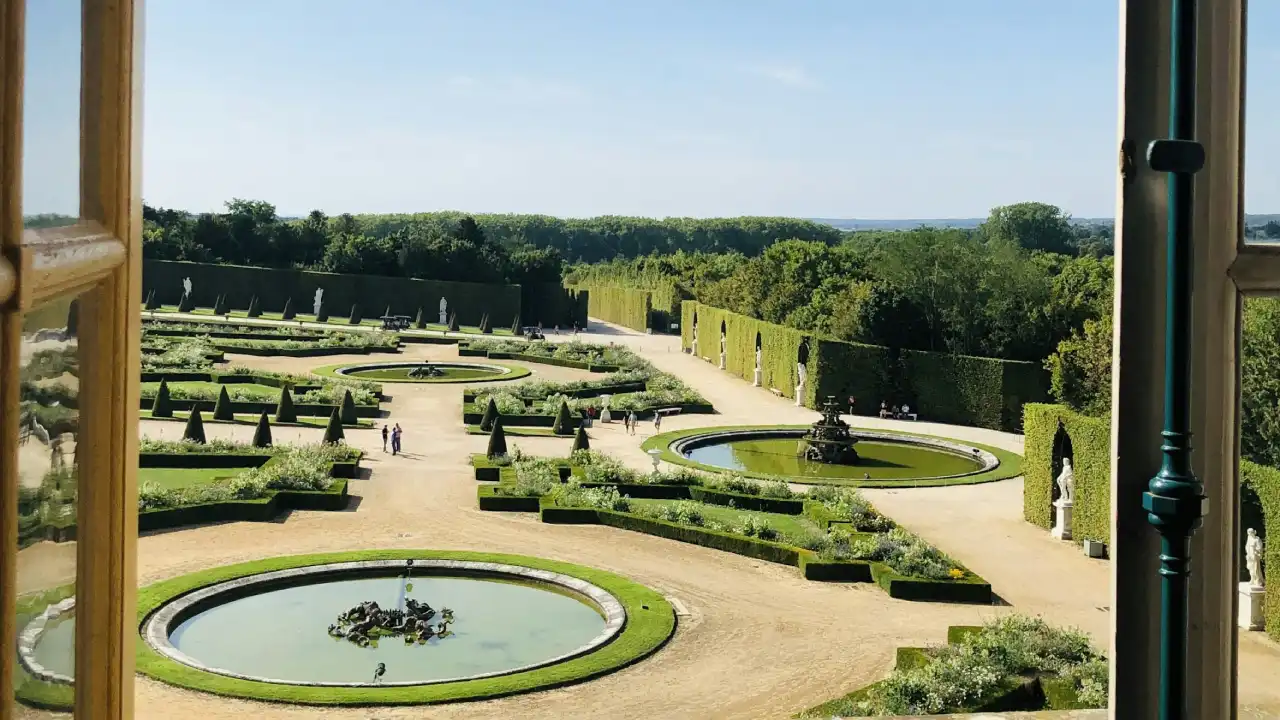
Customer support to help you with everything you need from 8.00 a.m. to 6.00 p.m.

Choose the best option for your needs and preferences and avoid the lines booking here

Enjoy art and history in Versailles, French monarchy’s masterpiece

The Royal Opera of Versailles, known as the Théâtre Royal de l’Opéra, stands as a remarkable testament to the opulence and grandeur of the French monarchy. Situated within the Palace of Versailles, this exquisite theater has captivated audiences since its inauguration in 1770. With its stunning architecture, rich history, and unparalleled acoustics, the Royal Opera is a cultural jewel that continues to enchant visitors from around the world.
The Royal Opera was commissioned by King Louis XV as a part of the celebrations for the marriage of his grandson, the future King Louis XVI, to Marie Antoinette. Designed by the renowned architect Ange-Jacques Gabriel, the opera house was intended to be a symbol of the monarchy’s wealth and cultural sophistication. The construction of the theater began in 1763 and was completed just in time for the royal wedding in 1770.
Gabriel’s design for the Royal Opera was revolutionary for its time. The theater was constructed using a combination of wood and plaster, which allowed for rapid construction while maintaining a sense of grandeur and permanence. The wooden structure also contributed to the theater’s exceptional acoustics, which remain one of its most celebrated features.
The architecture of the Royal Opera is a stunning blend of neoclassical elegance and baroque extravagance. The exterior of the theater is relatively understated, blending seamlessly with the rest of the Palace of Versailles. However, the interior is a different story altogether. Upon entering the theater, visitors are greeted with a breathtaking display of gilded moldings, intricate frescoes, and luxurious velvet seating.
The auditorium is designed in the shape of a horseshoe, a common feature in 18th-century theater architecture. This design not only enhances the acoustics but also ensures that every seat in the house has an excellent view of the stage. The ceiling of the auditorium is adorned with a magnificent fresco by artist Louis Jean-Jacques Durameau, depicting Apollo and the Muses, further emphasizing the connection between the arts and divine inspiration.
From its inception, the Royal Opera has been a hub of cultural activity. The theater hosted a variety of performances, including operas, ballets, and concerts, often featuring the most celebrated artists of the time. One of the most notable performances in the theater’s early history was the premiere of Christoph Willibald Gluck’s opera “Iphigénie en Aulide” in 1774, which was attended by Louis XVI and Marie Antoinette.
The Royal Opera also played a significant role during the French Revolution. In 1789, the Estates-General, a pivotal event leading to the revolution, was held in the theater. This period marked a dramatic shift in the theater’s use, as it transitioned from a symbol of royal opulence to a venue for political discourse.
The Royal Opera underwent several periods of neglect and restoration over the centuries. During the 19th century, the theater fell into disrepair and was used for various purposes, including a military hospital during the Franco-Prussian War. It wasn’t until the mid-20th century that significant efforts were made to restore the theater to its former glory.
In 1957, the Royal Opera was meticulously restored under the direction of architect André Japy. The restoration aimed to preserve the original design and materials as much as possible, while also updating the theater to meet modern standards of safety and comfort. The project was a resounding success, and the theater was officially reopened in 1957 with a gala performance attended by dignitaries from around the world.
Today, the Royal Opera of Versailles is a thriving cultural institution that continues to attract visitors from all corners of the globe. The theater hosts a diverse program of performances, ranging from classical operas and ballets to contemporary concerts and theatrical productions. The Royal Opera also serves as a venue for various festivals and special events, further cementing its status as a cultural landmark.
One of the highlights of the theater’s modern programming is the annual Versailles Festival, which features a series of concerts, operas, and ballets performed by world-renowned artists. The festival is a celebration of the rich cultural heritage of Versailles and provides a unique opportunity for audiences to experience the magic of the Royal Opera in a historic setting.
The Royal Opera of Versailles is more than just a theater; it is a living testament to the enduring power of art and culture. From its grand inception in the 18th century to its modern revival, the theater has played a pivotal role in the cultural life of France. Whether you are an opera aficionado, a history enthusiast, or simply a lover of beauty, a visit to the Royal Opera is sure to be an unforgettable experience.
With its breathtaking architecture, rich history, and world-class performances, the Royal Opera of Versailles continues to enchant and inspire audiences, just as it did more than two centuries ago. As you step into this magnificent theater, you are not just witnessing a performance; you are becoming a part of a living legacy that has shaped the cultural landscape of France and the world.
VERSAILLES PLACES
From the royal court, roam freely on the various circuits of the château, then traverse the small gardens and woods, and head to…
VERSAILLES PLACES
Discover the stunning private residence of Queen Marie-Antoinette, surrounded by lovely grounds and with her own…
VERSAILLES PLACES
The palace garden was the most important thing for King Louis XIV and is world-famous today. The gardens feature 14 fountains…
